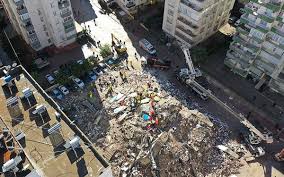
Introduction
Earthquakes are among the most formidable natural disasters, causing significant loss of life and property. With the increasing occurrence of seismic activities around the globe, it is crucial for communities to understand their implications. In Canada, as well as globally, earthquakes have raised concerns about preparedness and resilience in the face of such unpredictable events.
Recent Earthquake Events
Recently, the world has witnessed several significant earthquakes. On September 21, 2023, a magnitude 6.1 earthquake struck near the coast of southern Peru, affecting numerous coastal towns. Reports indicated damage to infrastructure including roads and housing, with local authorities promptly mobilizing to provide assistance and assess damages.
In Canada, the west coast, particularly British Columbia, remains seismically active. The region recorded a series of minor tremors in October 2023, reminding residents of the potential risk. Earthquakes in Canada may not always result in catastrophic outcomes, but experts warn that larger quakes are possible. The most notable historical example being the 1700 Cascadia earthquake, which has prompted continuous research on seismic safety.
Preparedness and Community Response
In light of these recent events, experts emphasize the importance of preparedness. Emergency kits, housing retrofitting, and public training programs can significantly enhance safety during earthquakes. The Government of Canada has collaborated with provincial organizations to develop earthquake preparedness plans, which include evacuation routes and training on how to react during tremors.
Communities are encouraged to participate in drills and education programs to better understand the necessary steps to take before, during, and after an earthquake. Local government initiatives, such as the “ShakeOut” drill held annually, focus on educating populations on the safety protocols crucial for minimizing risks.
Conclusion
The increasing frequency of earthquakes highlights the need for greater awareness and proactive measures at both individual and community levels. Understanding the potential threats and being prepared can make a significant difference in response to seismic activity. With the ongoing advancement of technology in earthquake detection, communities can also expect improved readiness and quicker response times to these natural calamities moving forward. Continuous education and preparedness strategies will remain critical in ensuring safety and minimizing the impact of such events.



